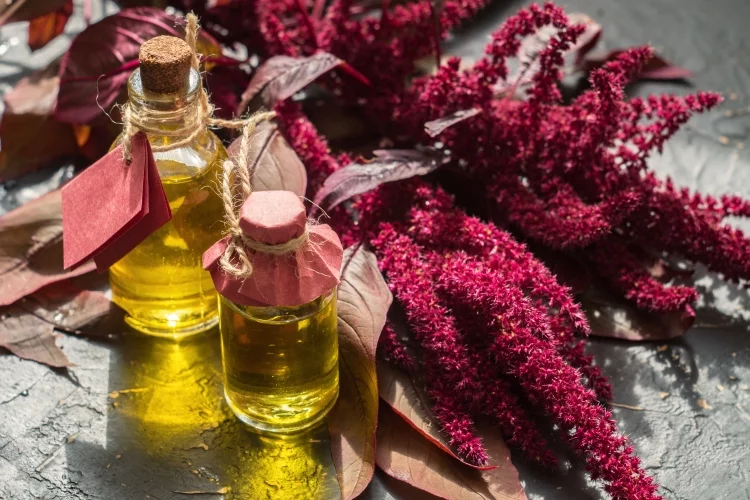reviewed by Truman Perkins
Amaranth recently gained popularity as a healthy food that has tons and tons of benefits. It is an ancient grain that has been a dietary staple food in specific parts of the world for millions of years. Amaranth resembles spinach and it is mainly found on the coast of South India and in the foothills of the Himalayas.
Amaranth comes in multiple colors that range from red, purple, green, and gold. The seeds of amaranth are the staple food of various people including the Aztecs, Maya, and Inca.
Contents
Now amaranth is known to be a superfood because of its health benefits. Amaranth has an outstanding nutritive profile that provides impressive health advantages. It is a grouping of almost sixty different grain species that have been harvested for up to 8,000 years.

The classification of amaranth falls in as a pseudocereal which means that it is not a cereal grain like oats and wheat. But amaranth contains a comparable group of nutrients like that of oats and wheat. These nutrients are utilized by humans and are very useful.
Amaranth has a nutty, earthy flavor that works creatively in many dishes. With the versatility of its uses, this nourishing grain is luckily gluten-free naturally along with being rich in fiber, antioxidants, proteins, and micronutrients.

With the resurgence of amaranth popularity many types of research were done that concluded that amaranth leaves are filled with essential nutrients and vitamins. They also found that amaranth leaves are packed with fiber and potassium which minimizes the risks of heart conditions. That is why amaranth is appraised as a heart-healthy food. The seeds of amaranth also have very nutritious features like they are gluten-free protein. They are mostly found in tropical regions and their color depends upon the area where they are grown.

Amaranth is an ancient grain that is rich in proteins and fibers as well as some very essential micronutrients.
Particularly, amaranth is a good source of magnesium, iron, phosphorus, and manganese.
246 grams (1 cup) of well-cooked amaranth contain the following nutrients:
Amaranth is full of manganese and it exceeds the daily need for nutrients in just one cup. Manganese is very essential for brain function and it is believed to protect humans from specific neurological issues.
It is also packed with magnesium which is a necessary nutrient for up to 300 reactions happening inside the human body like muscle contraction and DNA synthesis.
In addition, amaranth has a high level of phosphorus and this mineral is essential for healthy bones. It is also full iron that maximizes the production of blood.
Summary
Amaranth is an excellent source of manganese, fibers, magnesium, protein, phosphorus, and iron. It also contains various essential micronutrients.
Amaranth is superior to many green leaves because it is a powerhouse of beneficial nutrients. So here are some of the major advantages of Amaranth leaves.
Amaranth is low in calories because 100 grams of its leaves only contain 23 calories. There are traces of fat present in amaranth but there is no cholesterol. So it is a healthy and nutritious food option. Especially for those who are conscious about their weight and want to reduce it.
Amaranth leaves store many important antioxidants and phytonutrients. These nutrients immensely boost the nutrition of body health and reduce the inflammation present in the body.
Amaranth leaves contain soluble and insoluble fibers that have various advantages. The fibers present in these will ensure weight loss and reduce the possibility of high cholesterol levels and heart diseases. The high quantity of fiber and protein ensures more weight loss and less appetite.
The presence of iron in amaranth leaves makes it is a good source for cellular metabolism and is required for the making of red blood cells. You can reap maximum advantages from the powerful punch of iron present in amaranth by adding some extra source of Vitamin C. This will ensure maximum absorption of iron into the blood.
So you can add a little amount of lemon into the amaranth dish or you can have a glass of orange juice with it.
The leaves are rich in vitamin C that is a water-soluble vitamin that is required to fight against infection and also help with quick healing and recovery of wounds. Amaranth leaves also help to minimize the effect of free radicals that are responsible for many kinds of cancer and aging.
Vitamin K provides excellent bone health and also plays a fantastic role in blood clotting. It also strengthens bone mass and advances osteoblastic activity. Apart from that, amaranth leaves are beneficial for people suffering from Alzheimer's because it helps with the neural damage inside the brain.
Amaranth is full of anti-oxidative vitamin A. the leaves of amaranth are also rich in lutein zeaxanthin, beta-carotene, and flavonoid polyphenolic antioxidants that offer a protective layer towards oxidative stress formed by free radicals. Vitamin A ensures proper vision and healthy skin.
Amaranth is replete with vitamin B that also includes niacin, thiamine, vitamin B6, folates riboflavin, and many other in these leaves. These nutrients will help to reduce any risks of birth deficiencies in newborn babies.
Amaranth has potassium that is very good with cardiac health. It also helps to control the heartbeat rate. It promotes a balanced environment of cellular fluid.
As a result of any infection and injury inflammation cover that part of the body because it is a normal immune reaction. But chronic inflammation is not good and may result in some chronic diseases. Several studies concluded that amaranth leaves can reduce inflammation.
Cholesterol is a fat-like substance that is stored throughout the body. The presence of a high level of cholesterol can affect the flow of blood and could make the arteries narrow. Some animal studies show that amaranth help to reduce cholesterol level inside the body. Some accurate studies are required to understand the function of amaranth in humans in reducing cholesterol.
Amaranth should never be eaten raw because it has specific natural anti-nutrient substances including nitrates and oxalates. These components are eliminated with proper preparation or by boiling amaranth.
People who have Lysinuric protein intolerance should not eat amaranth because it may result in stomach pain and diarrhea.
Amaranth increases the absorption of calcium inside the body which could be harmful.
People who have hypoglycemic issues should not consume amaranth because it can lower the insulin amount inside the body.
Amaranth is very easy to prepare and incorporate into various dishes. You can sprout the grains of amaranth by soaking them in water for 2 to 3 days. Sprouting will help to digest amaranth quickly and will easily break down the various micronutrients.
To cook amaranth you can boil it in water. After boiling let it simmer for up to twenty minutes until all the water gets absorbed.
There are multiple other ways to enjoy this beneficial food:



 |
 |
 |
 |

About Truman Perkins
Truman Perkins is a Detroit-based SEO consultant who's been in the business for over a decade. He got his start helping friends and clients get their websites off the ground, and he continues to do so today. In his free time, Truman enjoys learning and writing about gardening - something he believes is a natural stress reliever. He lives with his wife, Jenny, and their twins in Detroit.
 |
 |
 |
 |
Get new FREE Gifts. Or latest free growing e-books from our latest works.
Disable Ad block to reveal all the links. Once done, hit a button below
 |
 |
 |
 |